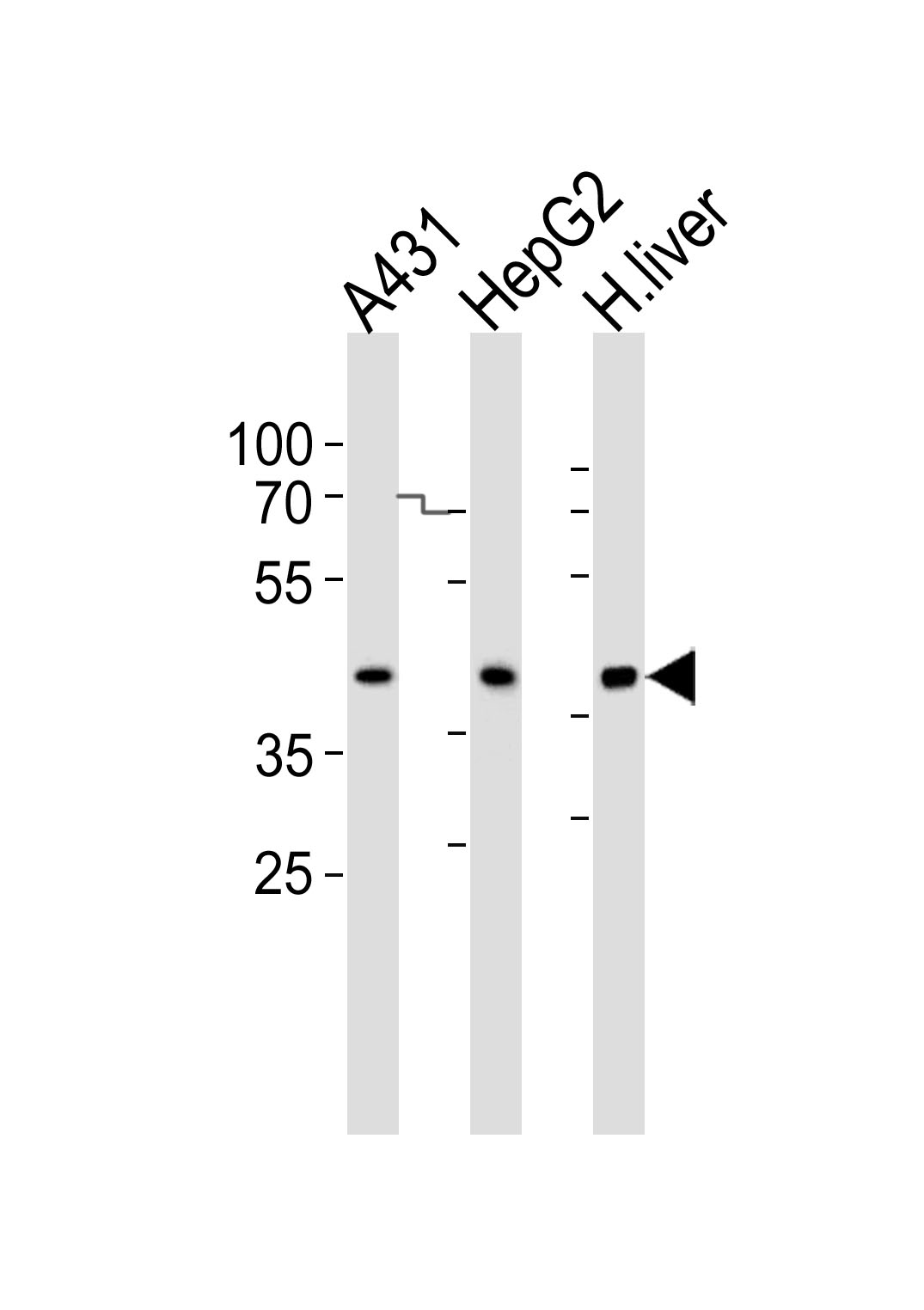ACADSB Antibody (Center)
Purified Rabbit Polyclonal Antibody (Pab)
- 产品详情
- 实验流程
- 背景知识
Application
| WB, E |
|---|---|
| Primary Accession | P45954 |
| Reactivity | Human |
| Host | Rabbit |
| Clonality | Polyclonal |
| Isotype | Rabbit IgG |
| Calculated MW | 47485 Da |
| Gene ID | 36 |
|---|---|
| Other Names | Short/branched chain specific acyl-CoA dehydrogenase, mitochondrial, SBCAD, 2-methyl branched chain acyl-CoA dehydrogenase, 2-MEBCAD, 2-methylbutyryl-coenzyme A dehydrogenase, 2-methylbutyryl-CoA dehydrogenase, ACADSB |
| Target/Specificity | This ACADSB antibody is generated from a rabbit immunized with a KLH conjugated synthetic peptide between 239-273 amino acids from the Central region of human ACADSB. |
| Dilution | WB~~1:1000 E~~Use at an assay dependent concentration. |
| Format | Purified polyclonal antibody supplied in PBS with 0.09% (W/V) sodium azide. This antibody is purified through a protein A column, followed by peptide affinity purification. |
| Storage | Maintain refrigerated at 2-8°C for up to 2 weeks. For long term storage store at -20°C in small aliquots to prevent freeze-thaw cycles. |
| Precautions | ACADSB Antibody (Center) is for research use only and not for use in diagnostic or therapeutic procedures. |
| Name | ACADSB (HGNC:91) |
|---|---|
| Function | Short and branched chain specific acyl-CoA dehydrogenase that catalyzes the removal of one hydrogen from C-2 and C-3 of the fatty acyl-CoA thioester, resulting in the formation of trans-2-enoyl-CoA (PubMed:10832746, PubMed:11013134, PubMed:21430231, PubMed:7698750). Among the different mitochondrial acyl-CoA dehydrogenases, acts specifically on short and branched chain acyl-CoA derivatives such as (S)-2-methylbutyryl-CoA as well as short straight chain acyl-CoAs such as butyryl-CoA (PubMed:10832746, PubMed:11013134, PubMed:21430231, PubMed:7698750). Plays an important role in the metabolism of L- isoleucine by catalyzing the dehydrogenation of 2-methylbutyryl-CoA, one of the steps of the L-isoleucine catabolic pathway (PubMed:10832746, PubMed:11013134). Can also act on valproyl-CoA, a metabolite of valproic acid, an antiepileptic drug (PubMed:8660691). |
| Cellular Location | Mitochondrion matrix |
| Tissue Location | Ubiquitously expressed. |
For Research Use Only. Not For Use In Diagnostic Procedures.
Provided below are standard protocols that you may find useful for product applications.
BACKGROUND
Has greatest activity toward short branched chain acyl- CoA derivative such as (s)-2-methylbutyryl-CoA, isobutyryl-CoA, and 2-methylhexanoyl-CoA as well as toward short straight chain acyl-CoAs such as butyryl-CoA and hexanoyl-CoA. Can use valproyl- CoA as substrate and may play a role in controlling the metabolic flux of valproic acid in the development of toxicity of this agent.
REFERENCES
Rozen R.,et al.Genomics 24:280-287(1994).
Andresen B.S.,et al.Am. J. Hum. Genet. 67:1095-1103(2000).
Ota T.,et al.Nat. Genet. 36:40-45(2004).
Deloukas P.,et al.Nature 429:375-381(2004).
Mural R.J.,et al.Submitted (SEP-2005) to the EMBL/GenBank/DDBJ databases.
终于等到您。ABCEPTA(百远生物)抗体产品。
点击下方“我要评价 ”按钮提交您的反馈信息,您的反馈和评价是我们最宝贵的财富之一,
我们将在1-3个工作日内处理您的反馈信息。
如有疑问,联系:0512-88856768 tech-china@abcepta.com.























 癌症的基本特征包括细胞增殖、血管生成、迁移、凋亡逃避机制和细胞永生等。找到癌症发生过程中这些通路的关键标记物和对应的抗体用于检测至关重要。
癌症的基本特征包括细胞增殖、血管生成、迁移、凋亡逃避机制和细胞永生等。找到癌症发生过程中这些通路的关键标记物和对应的抗体用于检测至关重要。 为您推荐一个泛素化位点预测神器——泛素化分析工具,可以为您的蛋白的泛素化位点作出预测和评分。
为您推荐一个泛素化位点预测神器——泛素化分析工具,可以为您的蛋白的泛素化位点作出预测和评分。 细胞自噬受体图形绘图工具为你的蛋白的细胞受体结合位点作出预测和评分,识别结合到自噬通路中的蛋白是非常重要的,便于让我们理解自噬在正常生理、病理过程中的作用,如发育、细胞分化、神经退化性疾病、压力条件下、感染和癌症。
细胞自噬受体图形绘图工具为你的蛋白的细胞受体结合位点作出预测和评分,识别结合到自噬通路中的蛋白是非常重要的,便于让我们理解自噬在正常生理、病理过程中的作用,如发育、细胞分化、神经退化性疾病、压力条件下、感染和癌症。






